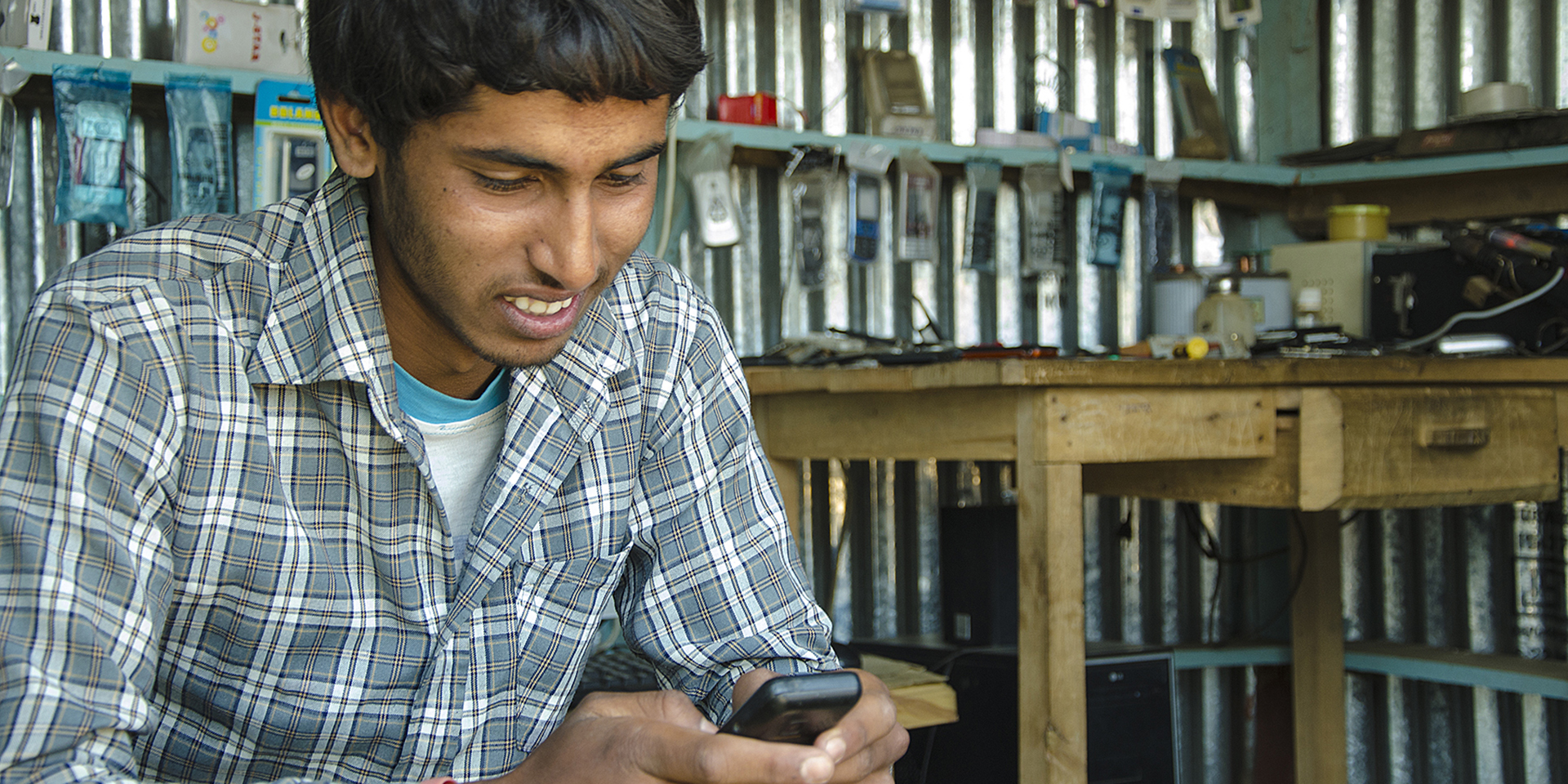
A University in Your Pocket: The Potential of Education Via Mobile
October 10, 2016 | 4 Minute ReadMobile technology is making learning more accessible, creating an opportunity in development.
It’s October 2006. You just updated your top friends on Myspace and direct messaged a classmate or colleague on AIM. You have a new voicemail on your flip phone, and you have just figured out how to email yourself photos from your cell. There is talk of Apple going “beyond the iPod,” and mobile money is just a gestating concept.
Ten years later, we know how this narrative played out.
What is mobile learning — and why should we care?
Today, U.S. universities like Harvard, Cornell, and MIT make their course catalogs available through online classes with mobile portals, while platforms like Udacity and Udemy — with a combined international user pool of over 54 million individuals — have changed how we learn and progress in our careers. In the last decade, mobiles have shifted from a luxury item to a key tool for finance, education, safety, community building, and mobilization. With phones in hand, we are only ever a millisecond away from learning something new.
We have already seen the value of applying mobile education technology (EdTech) within the international development community, and last month in Seattle, LINGOs’ Global Learning Forum addressed this topic head on. At the forum, the greatest incentive for a shift toward mobile-first technologies and strategies came from keynote speaker Julian Stodd, author of The Social Age. Quite simply, it will enable us to better serve the communities in which we work. While some industries are still matching capacity to community, the cultural economy has transitioned from the digital age into a new space governed by the democratization of access, expanded geolocation of learning, and unlimited connectivity of technology. While the nature of knowledge itself has not changed, the ways in which we absorb and recant have been remade.
As the social age matures, the criteria for the tools we use becomes more streamlined: “agile,” “lightweight,” and “effortlessly social” were reoccurring terms throughout the conference, from the opening keynote to discussions on corporate change management to a summary of the World Bank and CGAP’s financial inclusion platform, Gateway Academy. Stodd captured the interplay of EdTech trends by emphasizing that emerging tools must combine a formal learning space with an informal — or “social” — space, thereby creating an opportunity for communities of practice and co-creation.
Throughout the forum, practitioners supported their case that mobile learning responds directly to the preference of users themselves. Compared to alternative devices, mobiles are cheaper where available and more easily delivered by aid providers where they are not. Builders deftly leapfrog internet barriers by providing options for offline participation in lower bandwidth areas, creating wider-reaching global pathways to quality, scalable, and accessible content that is otherwise limited by more expensive train-the-trainer or other in-person models. With the increasing trend of countries like Myanmar entering the social age as smartphone first and only populations, mobile is the most direct line of communication.
Our industry’s interest in mobile makes sense
According to the PEW Research Institute, smartphone ownership and use in developing countries is accelerating faster than ever before, reaching a critical mass in nations like Chile, Argentina, and Jordan. Simultaneously, countries like Ghana, Nigeria, and Bangladesh are bypassing landline entirely and transitioning directly to mobile.
In international development, smart and dumb phone technologies have been leveraged to pioneer mobile money solutions through projects like USAID Microenterprise Access to Banking (MABS) and USAID E-PESO alongside financial inclusion start-up efforts like Branch, an app cleverly branded as “a bank in your pocket.” More recently, mobile has gained credibility as a facilitator for last mile supply chain delivery, disaster relief, and crisis response. Mobile-first solutions to development challenges are dominating the market, as recently identified at last month’s SOCAP conference on panels like “The Impact of Tech in Africa” and the aptly named “How Android is Eating Frontier Markets.” In this progression, mobile EdTech is a natural next step.
As these mobile strategies become common practice, development, tech, and academic professionals are looking toward the next frontier: leveraging mobile EdTech in developing countries. Training and skill-building platforms delivered via mobile are becoming a prioritized value-add — both internally for professional development and training, and as a mechanism for increased access to education, career mobility, and connectivity in the countries where we work.
International development in the social age
While the United States and United Kingdom hold a monopoly on massive open online courses (MOOCs), there is a deficit in learning providers who construct their tools with a developing country end-user in mind. TechChange, a D.C. based consulting and course provider targeted at social impact organizations, is one exception. President and CEO Nick Martin’s interactive forum session, “Mobile Learning on the Go,” was one of the highest attended, while the majority of participants — from World Bank, Mercy Corps, and Adam Smith International — expressed a desire to leverage mobile as a solution for global workforce training.
EdTech in other sectors demonstrates a dexterity at crossing geographic and bureaucratic barriers to access while problem solving around learning styles and abilities in real time. From coding and systems, to project and financial management, to continued medical education, to full degree programs, online global learning tools are in the codification stage. With development implementers piloting platforms in this vein and training hubs like InsideNGO looking to expand their services to local staff, a learning marketplace driving the creation, sharing, adaption, and deployment of content from D.C. to Myanmar cannot be far off.












